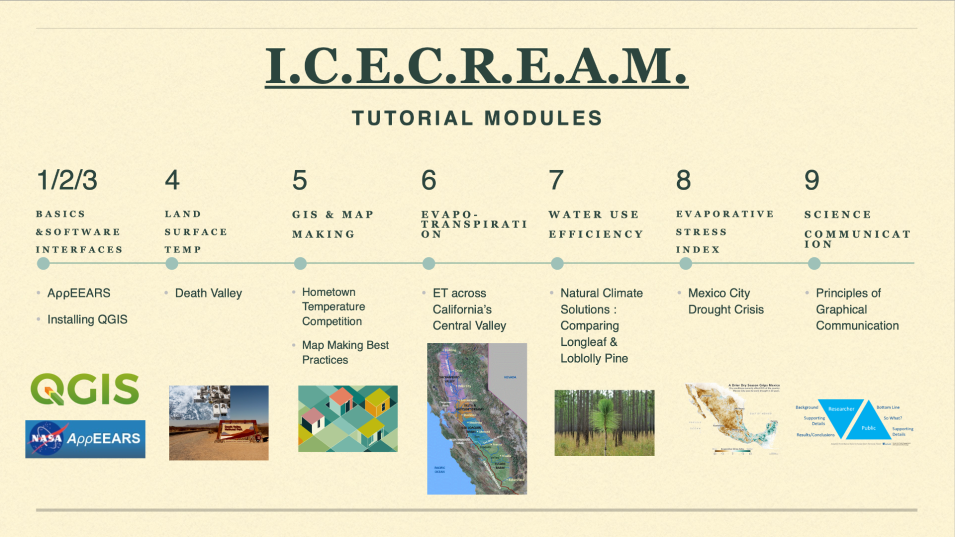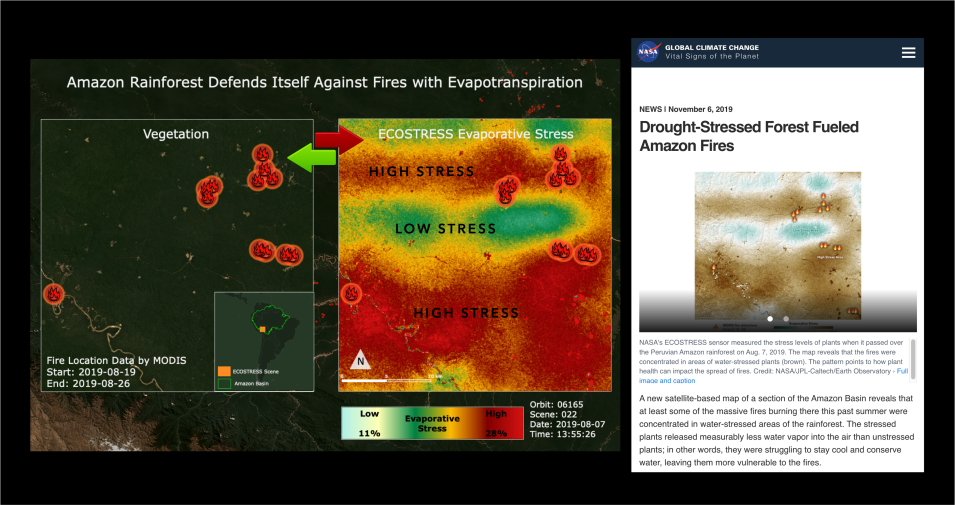"Once students get interested in a particular event, they can pursue it further. It transitions from an interesting observation into research, and turns into their final product," says ICE CREAM co-lead Dr. Gregory Goldsmith, associate professor of biological sciences and the Associate Dean for Research and Development in the Schmid College of Science and Technology at Chapman University. "Over the next semester they can conduct independent research, creating a poster presentation or even a paper for publication."
As Goldsmith notes, this progressive learning helps train many students and accelerates the science and applications of the science. Funding is available to support student attendance at conferences to present their findings as well as to publish their research in professional journals.
The Student Experience
Chapman University students Holland Hatch, a rising senior, and Ashley Agatep, a rising sophomore, are working through the ICE CREAM tutorials. Both are environmental science and policy majors, and say the tutorials not only increase their knowledge of accessing and working with NASA data, but also in the many ways data can be used.
One of Hatch's investigations compared data from the ECOSTRESS water use efficiency (WUE) product to WUE observed by AmeriFlux towers over a longleaf pine forest in coastal South Carolina, an investigation she is continuing with WUE comparisons at additional AmeriFlux sites. Hatch's work also is being used by the New Mexico Office of the State Engineer. "I definitely gained more confidence in my ability to quickly and efficiently produce meaningful work involving the data," says Hatch. "As I became more comfortable working with the data, I began to discover many new opportunities in which the data could be used."
Agatep says ICE CREAM opened her eyes to the massive capabilities of remote sensing. Building on her interests in environmental justice and health disparities, she used ECOSTRESS data to map urban hotspots in Sao Paulo, Brazil, and Santa Ana, CA. A local environmental justice organization utilized the data map she created, and other organizations have shown an interest in her work and its application in heat mitigation efforts. "Using ECOSTRESS data, I've been able to model catastrophic urban heatwaves worldwide, including in Pakistan, the Southern U.S., and Italy, and have utilized these data to look at socioeconomic disparities in urban heat exposure," she says.
Observations and Next Steps
Fisher notes that the project is succeeding in accomplishing its goals. An independent external assessment of the project shows that students are gaining skill and comfort in using ECOSTRESS data, finding a high degree of interest and inspiration through the tutorials, internalizing the skills they are learning, and taking these skills with them into future projects and research.
Fisher also notes the success in furthering the ICE CREAM objective of using the project to help increase diversity in STEM studies.
"We have over 12 universities and colleges signed up to adopt the course; 100% of them are [classified as] minority-serving institutions, historically Black colleges and universities, Hispanic-serving institutions, Native American-serving non-tribal institutions, or American and Pacific Islander-serving institutions," says Fisher. "Increasing diversity in the geosciences requires significant intervention, and we have a framework in which we think we can break through this long-standing barrier."
A new ICE CREAM website is live and Fisher and his team plan to add Spanish language and American Sign Language captioning to the tutorials. ICE CREAM tutorials also are available on GitHub. Fisher observes that ICE CREAM is showing great success in its overall goal of training the next generation of data communicators and instilling in them an appreciation for data.
"You don’t have to be a remote sensing scientist; you don't have to be an environmental scientist or an engineer," says Fisher. "You can be an artist, you can be a journalist, and you can do [research] however you want to do it in your own realm of interest and contribute."
Chapman students Hatch and Agatep agree. Hatch's investigations into water use continue, as does her use of NASA data. "I have found NASA data to be a very beneficial tool in my research," says Hatch. "I am excited to continue to incorporate the data into my education and career."
For Agatep, the tutorials are enabling her to explore her interests in applying NASA data to environmental justice efforts, building meaningful connections to active organizations, and creating tangible impacts on her community. "The course helped me find my passion and it truly was a life changing experience," she says.

